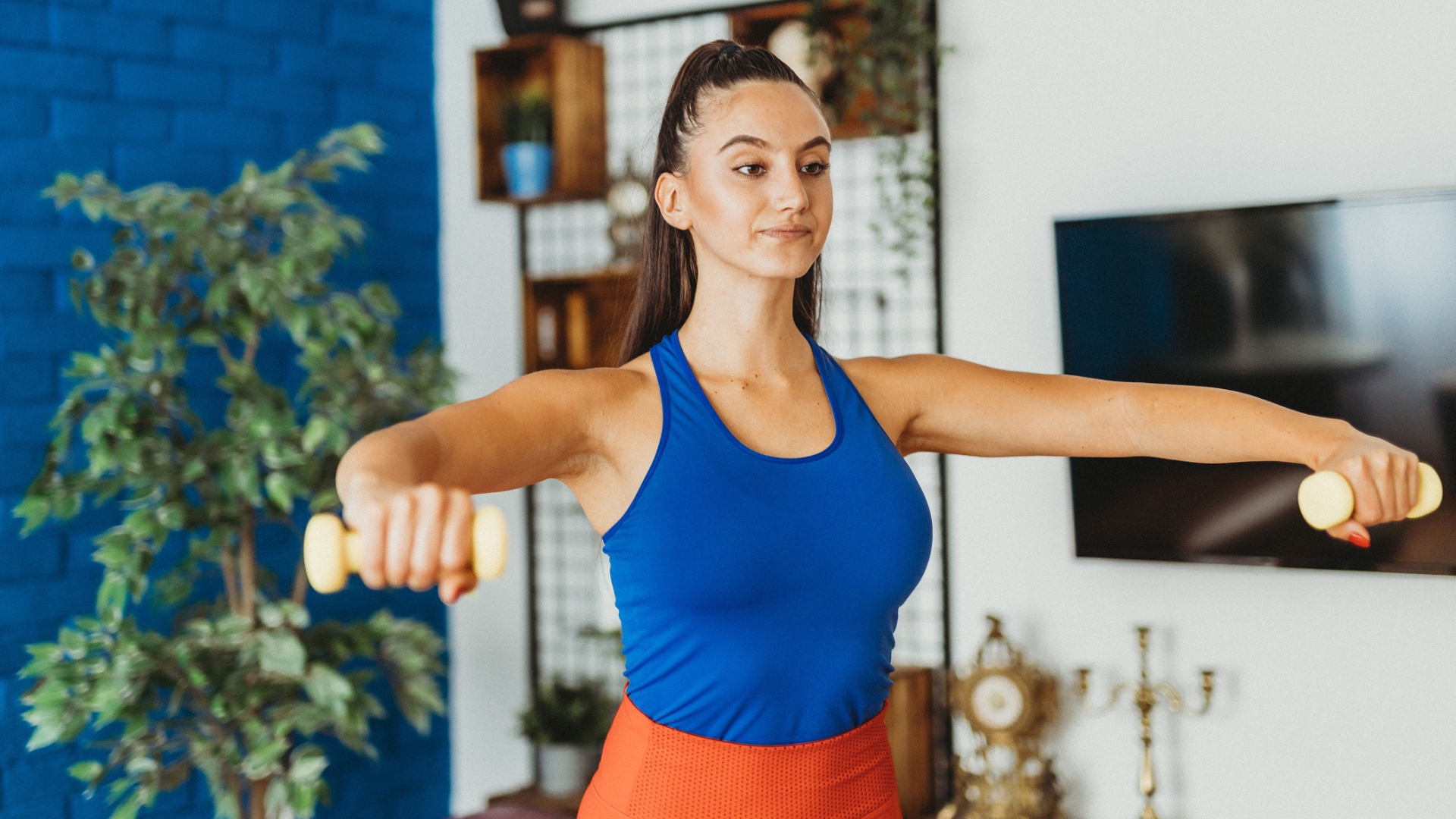Build strong and injury-resistant shoulders with this trainer’s three-move dumbbell finisher
Get stronger overhead with just a pair of dumbbells and 10 minutes

All you have to do to grow bigger, stronger shoulders is press weights overhead, right? Well, not quite.
The shoulders—technically the deltoids—are made up of three heads: the anterior or clavicular deltoid, the middle or acromial deltoid and the posterior or spinal deltoid.
Each one requires a slightly different stimulus if you want well-rounded strength and size.
You could dedicate an entire workout to pumping up your shoulders but there’s a smarter solution, says personal trainer Alex Marks of London PT studio On Your Marks.
He’s constructed a 10-minute finisher to tag onto your regular workouts, that will help you target the shoulders properly.
Marks’ shoulder burner involves three exercises that hit your deltoid muscles from multiple angles and through different movement patterns: pressing, pulling and lateral raises.
The result of this three-pronged approach is stronger, more injury-resistant shoulders that don’t just look more defined, but most importantly, move better too.
Start your week with achievable workout ideas, health tips and wellbeing advice in your inbox.
Try the 10-minute shoulder finisher
Marks suggests performing each move back to back (without rest) to near failure, for the full 10 minutes.
However, in my experience, that could be brutal, especially if you’re not an advanced lifter.
Instead, try breaking the workout into 60-second blocks and adjust the working period to your fitness level.
Beginners can work for 30 seconds and rest for 30 seconds for each move; intermediates can increase the work to 40 seconds on and 20 seconds off; while more advanced can aim for 50 seconds of effort and just 10 seconds of rest.
What’s crucial is focusing on the effort you put into each repetition and round, rather than the numbers.
“As long as you hit your ceiling of ability, you’re making progress,” says Marks.
Ready to give this shoulder finisher a go? Let's get to work.
Unilateral Arnold press
- Hold a dumbbell in each hand at shoulder height, palms facing your face, elbows lifted.
- Press one weight overhead, rotating your hand as you lift so your palm faces forward at the top.
- Lower with control, then repeat on the other side.
Dumbbell lateral raise
- Hold a light dumbbell in each hand by your sides.
- Keeping your core and glutes engaged but neck relaxed, raise each dumbbell out to your sides to shoulder height.
- At the top, slightly tip the front of the dumbbell down to effectively target the medial deltoids.
- Lower with control and repeat.
Dumbbell upright row
- Hold a dumbbell in each hand in front of your thighs.
- Pull the dumbbells up toward your chest, elbows out to the sides.
- Keep the weights close to your body and your elbows higher than your wrists.
- Lift the weights as high as you can comfortably—usually to around chest height.
- Lower under control and repeat.
Explainer: Unilateral versus bilateral
This workout includes unilateral and bilateral exercises.
Unilateral means working one side of the body at a time—like with the Arnold press in this workout—and bilateral moves use both sides of your body together, like the lateral raise and upright row here.
Unilateral exercises help you identify and fix any imbalances in strength, ensuring you develop strength evenly. Bilateral moves let you lift heavier and build overall strength.
Imbalances can build up due to one side compensating for the other, so it’s important to include both unilateral and bilateral exercises in your workouts.

Sam Rider is an experienced freelance journalist, specialising in health, fitness and wellness. He is also a REPS level 3 qualified personal trainer.
You must confirm your public display name before commenting
Please logout and then login again, you will then be prompted to enter your display name.



